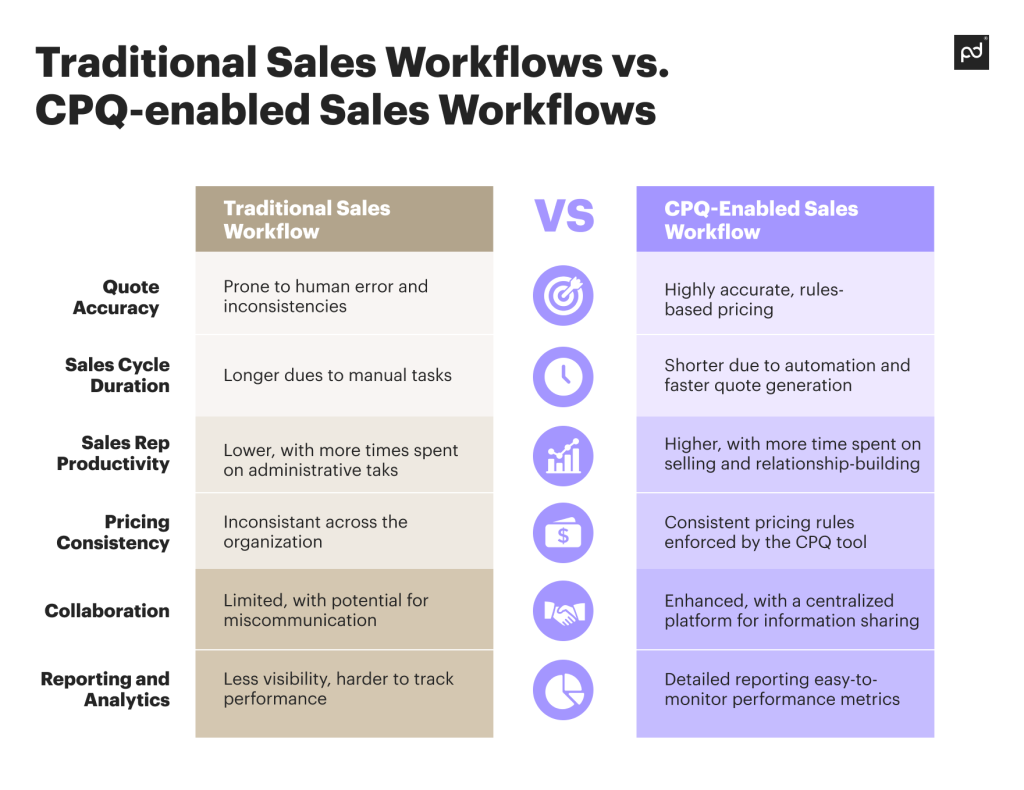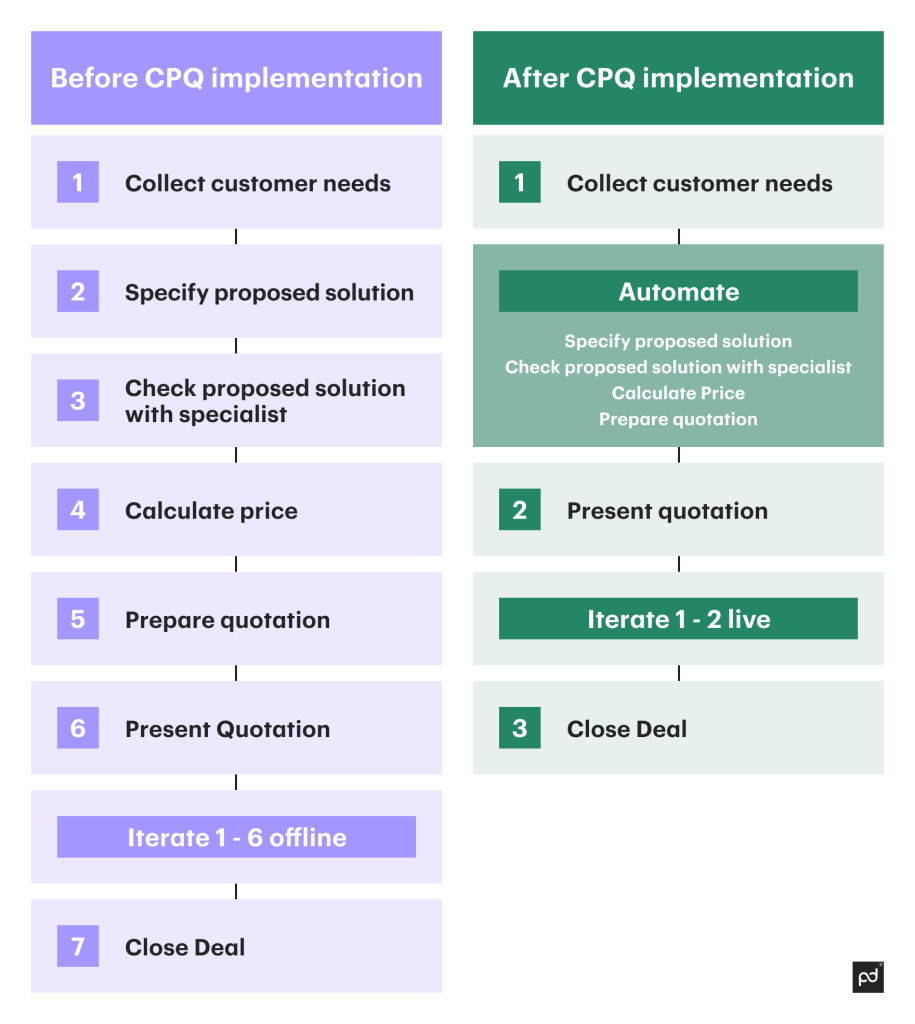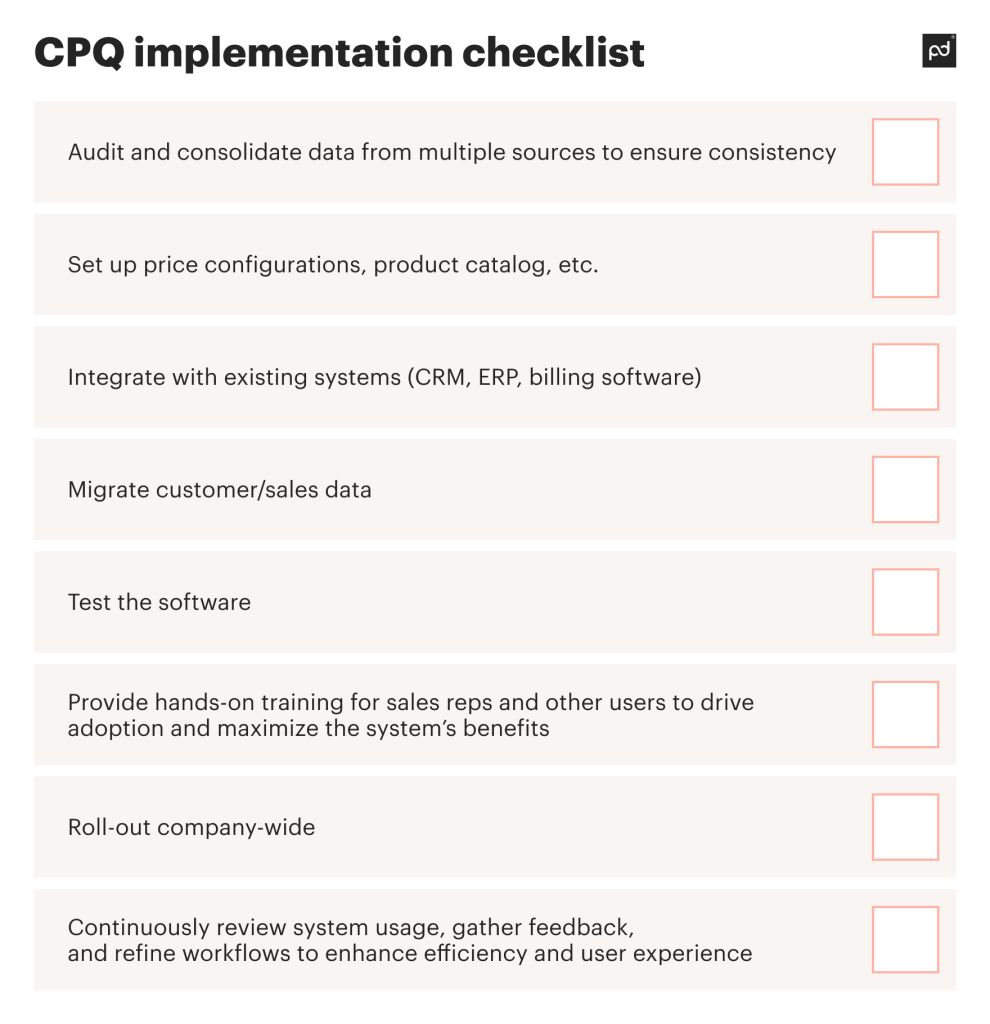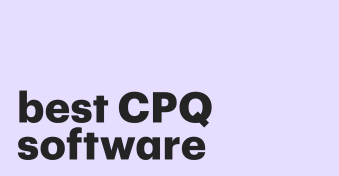Implementing Configure, Price, Quote (CPQ) software can transform your sales process.
CPQ tools help sales reps create fast, accurate quotes and improve efficiency across teams to help you accelerate the sales cycle and close more deals.
But a successful CPQ implementation requires careful planning and the right technology to fit your business needs.
In this post, we’ll walk through key steps for a smooth implementation and how to choose the best software to support your team’s goals.
What is CPQ software?
CPQ software is a sales tool that provides features to help sales reps generate quotes for configurable products or services.
For example, when you buy a car, there are a number of options and add-ons to choose from, such as color, make and model, wheels, upholstery, navigation systems, and more.
Calculating all of these options manually can be tedious and lead to errors in the quoting process.
CPQ software like PandaDoc offers features like dynamic pricing and guided selling to walk reps through the quoting process.
Traditional sales workflows vs CPQ-enabled workflows

What is CPQ implementation?
CPQ implementation is the process of configuring and rolling out CPQ software for an organization.
Just like any other software, CPQ tools must be implemented and onboarded for team members to begin using them.
We’ll go into more detailed steps below, but CPQ implementation includes defining product rules and a company’s pricing structure, and syncing data between CPQ and CRM systems.

Preparing for CPQ implementation
Before rolling out a CPQ system, companies must ensure they’re fully prepared to integrate the new software.
Follow these steps to make sure your teams are ready:
- Define business objectives and your organization’s specific needs
- Confirm your budget and get buy-in from stakeholders
- Identify pain points in the current quoting process
- Set clear goals and KPIs. What milestones or metrics will help you determine success? This could include reducing quote time, improving accuracy, and increasing sales efficiency
- Evaluate vendors (more on this below)
- Determine must-have vs. nice-to-have features
- Review pricing structures, discounting rules, and product catalogs
- Audit and consolidate data from multiple sources to ensure consistency
- Identify areas for automation (e.g., approvals, bundling, custom configurations)
- Create an Implementation plan: pilot testing, deployment, and user adoption
- Set realistic timelines
- Assign a project team
We’ll go over additional steps for implementation below.
Lead time: how long does CPQ implementation take?
The process can take anywhere from weeks to months.
If there are less than 50 customers and the CPQ implementation is new, it will take the least amount of time, around 3 months.
If you have somewhere between 100-1,000 customers, the process can take 3-12 months, and it increases from there.
PandaDoc CPQ makes the process and learning curve easy. We’re here to help you through it so you can be up and running as soon as possible.
The time it takes to implement a solution varies depending on several factors.
- Company size and complexity
- The software you choose
- Integration needs
- A sample implementation might look like this:
- Pre-implementation (2-3 months). This includes research, evaluating vendors, and preparing data.
- Configuration and testing (3-6 months). This stage includes system setup, data migration, and testing.
- Training and software rollout (1-3 months). Training sales teams and building workflows
Teams involved in CPQ implementation
Finding and onboarding a new solution is a team effort and requires collaboration between departments.
- Sales and Sales Ops: Define requirements and ensure the software aligns with sales workflows
- IT and system admins: Manage integrations with CRM and other applications
- Finance: Ensure accurate pricing, discounts, and compliance
- Product management: Provide product catalogs and configurations
- Marketing: Align sales collateral, proposals, and branding in the CPQ system
- Customer Success: Ensuring the tool aligns with customer needs and enhances the post-sale experience
How to choose the right CPQ to implement
With so many CPQ options, it can be overwhelming to find the right fit for your team’s needs.
Evaluate different CPQ vendors based on industry needs, integrations, and scalability. You can contact sales teams for personalized demos and to ask questions specific to your business needs.
During this stage, you want to do a deep dive into the different features of the platforms you’re evaluating.
A robust CPQ solution should include the following features:
Pricing rules and configuration
Organizations can define pricing structures and set rules for discounts and product bundles.
Guided selling
Helps reps move through the pricing process quickly and ensures quote accuracy.
CRM integration
Ensure compatibility with CRM (Salesforce, HubSpot), ERP, and billing systems to sync customer data and collect payments from your proposals.
PanaDoc integrates with Salesforce, HubSpot, and PipeDrive, and allows you to collect payments via PayPal and Stripe.
Reporting and analytics
A strong CPQ system should include real-time reporting on sales performance and quote approval times. Analytics tools can provide valuable insights to help businesses optimize their sales strategy.
Nice-to-have CPQ features
These features aren’t required but can make your CPQ tool even more useful.
Document creation and editing
Built-in document generation allows users to create customized proposals, quotes, and contracts directly within the CPQ platform.
PandaDoc features templates, branding options, and a drag-and-drop editor to streamline the process and ensure consistency across documents.
eSignature
Electronic signature integration speeds up deal closure by enabling customers to sign contracts directly from a quote.
Approval rules
Custom approval workflows ensure compliance with pricing policies and prevent unauthorized discounts or configurations.
Businesses can set rules that require manager sign-off for specific quote thresholds or complex deal structures.
It’s also helpful to look for a solution with an intuitive, user-friendly interface.
This will help team members get up and running faster with the software without extensive user training.
Also, when comparing vendors, find out what type of ongoing support they offer for their clients.
Do they provide user training? Is customer support readily available to help with troubleshooting needs? While these aren’t system features, they can ensure smooth CPQ implementation and increase user adoption.
CPQ implementation steps
Once you’ve chosen a vendor and completed all the prep work, it’s time to implement and roll out the solution company-wide.
Follow these steps for a smooth CPQ implementation.
Purchase the selected CPQ software and implement it with the rest of your tools for the most accurate quotes.
The right CPQ system will improve the efficiency of your business processes.
Some solutions will be very easy to integrate, while others may require substantial efforts and even custom development to help connect the dots.
Set up your products and rules
It’s now time to start configuring your products in the CPQ, and set up bulk discount rules, dependencies, limitations, and prices.
These include (but are certainly not limited to) the following:
- Product catalog search filters: Facilitates efficient product retrieval in large catalogs.
- Pricing table & discounts: Displays pricing structures and allows for discount applications.
- Quote line groups: Organizes products into categories for grouped parameter application.
- Conditional fields: Implements rules-based configurations for dynamic quoting.
- Dashboard & reporting: Offers insights and analytics for performance tracking and decision-making.
These and many other CPQ features can be expanded upon to suit the needs of your sales team.
One example: The ability to add conditional fields to the business logic of your sales process opens a slew of product configuration scenarios for you — you can make certain upgrades available only if a particular component is selected or apply a discount when the combined cost of a product exceeds a particular value.
Mistakes to avoid when implementing CPQ
Although mistakes are virtually unavoidable, following these simple rules should help you steer clear of the most common pitfalls:
- Don’t underestimate training needs. Implementing CPQ software requires proper instruction. Skipping comprehensive user training can lead to underutilization and ineffective use of the software’s full potential.
- Don’t ignore data quality. Poor quality or inaccurate data can hinder CPQ functionality, causing flawed configurations, incorrect quotes, and potentially damaging customer relationships.
- Don’t ignore the importance of post-implementation review. Failure to review and refine processes after the implementation phase can result in persistent inefficiencies and limit the software’s benefits.

Implement a CPQ solution and optimize your sales process
Implementing a CPQ system may seem like a big undertaking, but breaking it down into clear steps — defining your needs, selecting the right solution, integrating with existing systems, training your team, and continuously optimizing — can make the transition as smooth as possible for everyone involved.
The result? Faster quotes, fewer errors, and a more efficient sales process that drives revenue growth.
If you’re ready to see how CPQ can transform your sales workflow, contact our team to get a personalized demo of PandaDoc CPQ.
Disclaimer
PandaDoc is not a law firm, or a substitute for an attorney or law firm. This page is not intended to and does not provide legal advice. Should you have legal questions on the validity of e-signatures or digital signatures and the enforceability thereof, please consult with an attorney or law firm. Use of PandaDoc services are governed by our Terms of Use and Privacy Policy.
Originally published February 11, 2025, updated March 27, 2025


